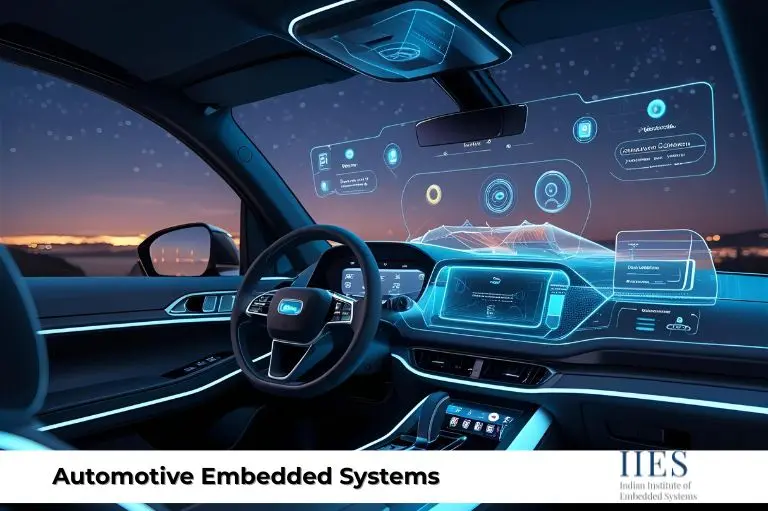
Automotive Embedded Systems play a key role in functions such as battery management, motor control, hybrid vehicles, and autonomous driving, shaping the future of mobility.
An automotive embedded system is a microcontroller or microprocessor-based system that performs dedicated functions inside a vehicle. These systems are designed to be efficient, reliable, and real-time, ensuring safe and smooth vehicle operation. They combine hardware (sensors, actuators, controllers) and software to manage tasks like fuel injection, engine control, or infotainment.
Cars are no longer just mechanical machines. Today’s vehicles rely on electronics and software to improve performance, safety, and user experience. Embedded systems enable features like collision detection, navigation, emission control, and connectivity, making them indispensable in modern transportation.
Here are some of the most common applications:
| Feature | Benefit |
|---|---|
| Safety Systems | Enhanced passenger protection and reduced accidents |
| Engine Management | Improved fuel efficiency and lower emissions |
| Infotainment | Better user experience with modern interfaces |
| Driver Assistance | Reduced driver fatigue and improved convenience |
| Electric Vehicles | Longer battery life and efficient power usage |
| Autonomous Driving | Increased automation and future-ready mobility |
Automotive embedded systems work by collecting data from sensors, processing it through controllers, and sending output signals to actuators. For example, in an anti-lock braking system (ABS), sensors detect wheel speed, the controller processes the data, and actuators adjust the brake pressure to prevent skidding.
Some real-world examples include:
While they provide incredible benefits, automotive embedded systems also come with challenges:
The future of automotive embedded systems is shaped by innovations in AI, IoT, and sustainable mobility. Some upcoming trends include:
Developing embedded software for automotive applications requires a systematic approach and adherence to strict quality standards. The process typically involves requirements analysis, system design, software development, testing, and validation. Automotive embedded software developers must consider factors such as real-time performance, safety, and reliability. Various methodologies, including Agile and ISO 26262, are followed to ensure the successful development of robust and efficient embedded software for automotive systems.
The field of automotive embedded systems offers exciting career opportunities for engineers. Automotive embedded engineers are in high demand due to the growing reliance on advanced technologies in the automotive industry. They are responsible for designing, developing, and testing embedded systems in vehicles. Salaries vary depending on experience, qualifications, and location, but the average range is between $80,000 and $120,000 per year.
Automotive embedded systems are at the heart of modern vehicles, ensuring safety, comfort, efficiency, and intelligence. From simple engine control units to advanced autonomous driving technologies, these systems define the driving experience today and in the future.
Examples include ABS brakes, airbag controllers, GPS navigation, and battery management systems in EVs.
They improve performance, safety, fuel efficiency, and enhance the overall driving experience.
Challenges include reliability, cost, cybersecurity, and handling the increasing complexity of vehicle electronics.
The future lies in AI-driven systems, connected vehicles, and innovations for electric and autonomous cars.
It is a microcontroller-based system that performs dedicated functions in a vehicle, such as engine control or infotainment.
Indian Institute of Embedded Systems – IIES